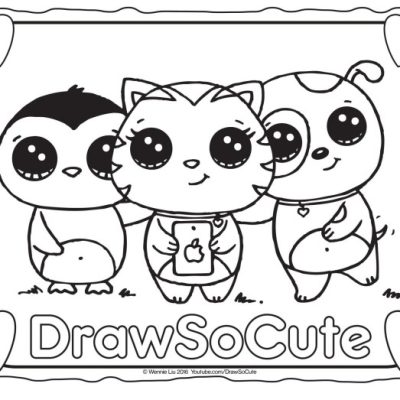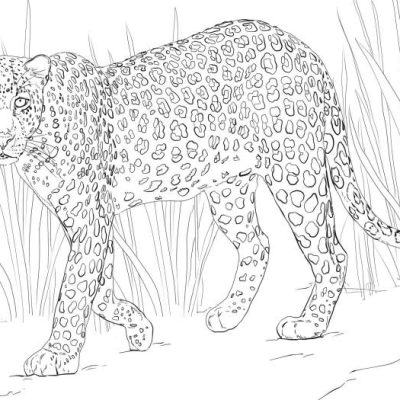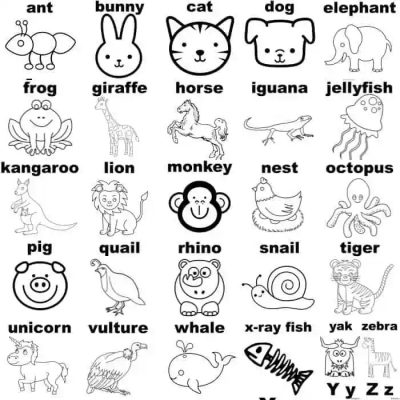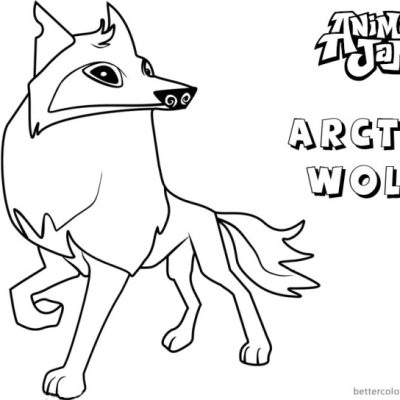Coloring Page of Animal in Winter Clothes

Winter Animal Clothing Styles

Coloring page of animal in winter clothes – Designing winter wardrobes for our furry friends is a surprisingly hilarious challenge! Imagine the fitting sessions… the sheer stubbornness of a penguin refusing to try on a new bobble hat! Let’s dive into some truly outrageous (and hopefully practical) winter fashion for our animal pals.
Polar Bear Winter Outfits
Polar bears, despite their thick fur, could use a little extra help battling the arctic chill. Think of it as high-fashion arctic survival gear! Here are five unique outfit ideas, each designed with both style and warmth in mind.
Yo, check out these adorable animal coloring pages all bundled up in winter gear! It’s like, super cute, right? But if you’re feeling something a bit more, you know, glam, then maybe try this coloring book princess anime – those princesses are always rocking the best outfits! Then, after you’ve had your fill of anime royalty, get back to those cuddly critters in their winter scarves and hats – it’s a win-win!
- Outfit 1: A sleek, shimmering silver parka made from waterproof, windproof kelp fabric. The hood is lined with soft seal-skin for ultimate coziness. Think “Arctic Chic.”
- Outfit 2: A vibrant turquoise jumpsuit crafted from recycled polar ice crystals (yes, really!). This outfit features reinforced knee pads for extra protection during those slippery ice-skating adventures.
- Outfit 3: A practical, multi-layered ensemble consisting of a fluffy white snowsuit (think marshmallow texture!), a bright orange life vest (safety first!), and chunky, waterproof boots made from recycled fishing nets.
- Outfit 4: A sophisticated, black and white tuxedo-style outfit with a plush, fur-trimmed scarf. Perfect for a formal winter gala at the North Pole.
- Outfit 5: A playful, multi-colored patchwork outfit made from scraps of discarded fishing gear. Each piece is unique, reflecting the polar bear’s individual personality.
Penguin Winter Hats, Coloring page of animal in winter clothes
Designing hats for penguins requires a delicate balance of practicality and cuteness. We need to keep those little heads warm without compromising their waddle!
- Hat 1: A cozy knitted beanie made from super-soft, waterproof alpaca wool. The bright yellow color will make the penguin easily visible in snowy conditions.
- Hat 2: A stylish, wide-brimmed fedora made from durable, water-resistant canvas. The brim provides extra protection from the sun’s glare (yes, even in winter!) and keeps snow out of their eyes.
- Hat 3: A practical, hooded puffer jacket with a built-in hood made from recycled plastic bottles. The hood is lined with fluffy down feathers for extra warmth.
Squirrel Winter Clothing Considerations
Dressing a squirrel for winter presents a unique challenge. We need to keep them warm without hindering their incredible agility and ability to scamper up trees. The key is lightweight, flexible materials that provide maximum warmth without restricting movement. Imagine a tiny, furry ninja!
Fox and Rabbit Winter Clothing Needs
The clothing needs of a fox and a rabbit differ significantly due to their contrasting physiologies and habitats. Foxes, with their thicker fur and generally larger size, require less additional insulation than rabbits. Rabbits, being smaller and often inhabiting colder, more exposed environments, benefit greatly from extra protection from the elements. Think of it as a difference between a winter coat and a full-on arctic expedition suit.
A fox might need a stylish scarf, while a rabbit might need a tiny, fleece-lined parka!
Color Palette Selection for Winter Scenes: Coloring Page Of Animal In Winter Clothes

Alright, buckle up, buttercup! Choosing the right colors for your winter animal coloring page is like picking the perfect scarf – it’s gotta be cozy, stylish, and totally on point. We’re diving headfirst into the frosty wonderland of color palettes, so grab your crayons and let’s get creative!Choosing the right color palette is crucial for setting the mood and visual appeal of your winter animal coloring page.
Think of it as the soundtrack to your artistic masterpiece; the wrong notes and the whole thing falls flat. We’ll explore different color combinations, from the warm and inviting to the cool and serene, and show you how to make them all work together harmoniously.
Five Color Palettes for Winter Coloring Pages
Here are five color palettes, each offering a unique winter vibe. Remember, these are just starting points; feel free to tweak them to your heart’s content!
- Frosty Blues and Silvers: This palette uses various shades of blue (from icy light blue to deep navy) combined with shimmering silvers and whites. It creates a classic, cool winter feel, perfect for a serene scene. Imagine a snowy owl perched on a branch, its feathers rendered in subtle shades of blue and white, against a background of a silvery moonlit forest.
- Warm Winter Hues: This palette incorporates warm tones like deep reds, oranges, and browns, contrasted with creamy whites and muted yellows. Think cozy cabin vibes! A fox snuggled in a snowy den, its fur a mix of warm oranges and browns, surrounded by snow rendered in creamy white and soft yellow highlights.
- Winter Wonderland Pastels: This palette utilizes soft pastel shades of pink, lavender, mint green, and light blue, creating a gentle and whimsical feel. A playful penguin wearing a pastel pink scarf, surrounded by pastel-colored snowflakes, would fit perfectly here.
- Deep Winter Shadows: This palette leans towards darker, more dramatic colors like deep purples, dark blues, charcoal grays, and accents of bright white. This creates a mysterious and atmospheric scene. A majestic wolf howling under a dark, starlit sky, its fur a mix of dark blues and grays, contrasting with the bright white snow.
- Rustic Winter Charm: This palette uses earthy tones like deep greens, browns, and creams, accented with pops of red and orange. Think of a rustic farmhouse scene. A friendly snowman with a carrot nose, wearing a brown scarf and hat, standing in a snowy field rendered in deep greens and browns.
Creating Visual Harmony with Complementary and Analogous Color Schemes
To create a visually pleasing coloring page, we can use complementary and analogous color schemes. Complementary colors are opposite each other on the color wheel (like blue and orange), creating a vibrant contrast. Analogous colors are next to each other on the color wheel (like blue, blue-green, and green), creating a harmonious and calming effect. For example, you could use a complementary scheme with a blue-toned winter scene and add orange accents on your animal’s scarf or hat.
Alternatively, an analogous scheme using blues and greens would create a serene, naturalistic winter forest.
Color Palette for a Snowy Forest Background
For a snowy forest background, a palette featuring various shades of white, light gray, and pale blue would be ideal. Adding touches of deeper blues for shadows and hints of muted green for evergreens will add depth and realism without overwhelming the scene. Imagine a gradient background, starting with a pale blue at the top, gradually transitioning to white in the middle, and ending with a slightly darker gray at the bottom to suggest depth and shadows.
Three Color Schemes Evoking Different Moods
Let’s paint some moods!
- Playful: Bright, cheerful colors like sunny yellows, vibrant pinks, and sky blues create a fun and energetic atmosphere. Imagine a playful polar bear wearing a bright yellow raincoat, frolicking in the snow.
- Serene: Soft pastels like light blues, lavender, and mint green promote a calm and peaceful feeling. Picture a gentle deer resting in the snow, its coat a soft lavender, surrounded by a pastel blue sky.
- Dramatic: Deep blues, purples, and grays, accented with stark whites, create a sense of mystery and intensity. Envision a majestic wolf silhouetted against a dark purple twilight sky, the white of its fur a striking contrast to the dark background.
Illustrative Techniques and Design Elements

Alright, buckle up, buttercup! We’re diving headfirst into the wonderful world of illustrating adorable animals in winter wear. Think fluffy scarves, tiny hats, and maybe even some snow boots for our furry (or feathery!) friends. This is where the magic happens, transforming our cute concepts into charming coloring page masterpieces.
Drawing Styles for Winter Animal Coloring Pages
Let’s get those creative juices flowing! We’ll explore three distinct styles, each with its own unique charm. First up, we have the cartoonish style, bursting with exaggerated features and playful expressions. Think big, round eyes, chubby cheeks, and maybe even a slightly wonky nose. It’s all about fun and simplicity! Then there’s the realistic style, aiming for accuracy in proportions and details.
This style requires a bit more precision, but the result is a beautifully detailed and lifelike animal. Finally, we have the whimsical style – a delightful blend of fantasy and reality. Think charming details, unexpected combinations of colors and textures, and maybe even a touch of magic sprinkled in!
Creating a Simple Winter Background Using Basic Shapes
Time to set the scene! For a simple yet effective winter background, we’ll stick to the basics: circles, squares, and triangles. Start with a large rectangle or square to represent the ground, maybe slightly angled to add some visual interest. Then, sprinkle some small circles of varying sizes across the page to represent snowflakes. For a touch of whimsy, you can add some simple triangular shapes to represent distant snowy hills.
Finally, use a light blue rectangle to create the sky, adding a few small crescent shapes to represent clouds, if you fancy! Remember, less is more!
Step-by-Step Guide for Drawing a Penguin Wearing a Scarf and Hat
Let’s draw a dapper penguin! First, draw an oval for the penguin’s body, then add a smaller oval on top for its head. Next, draw two small circles for eyes, a triangular beak, and two tiny flippers. For the hat, draw a small circle on top of the head, adding a small line across the top for the brim.
The scarf is simple: draw a long, slightly curved rectangle around the penguin’s neck. Finally, add some small lines to represent the texture of the scarf and hat. Ta-da! A perfectly dressed penguin ready for a coloring adventure.
Visual Representation of Textures in a Coloring Page Design
Now, let’s add some texture! To create a sense of depth and realism, we need to think about how to represent different textures visually. Here are five textures and how to represent them:
- Fur: Use short, closely spaced lines or small dots to suggest the softness and fluffiness of fur. Vary the line density to create a sense of depth and shading.
- Wool: Use slightly longer, slightly more irregular lines to represent the texture of wool. Add some shading to create a sense of volume and texture.
- Snow: Use small, closely spaced dots or short dashes to suggest the lightness and fluffiness of snow. You could also use a stipple technique to create a more textured look.
- Ice: Use thin, parallel lines to suggest the smooth, glassy surface of ice. Add some subtle shading to give it depth and realism.
- Wood: Use thin, parallel lines that run in the same direction to represent the grain of wood. For a more realistic look, add slightly darker lines to represent the wood’s knots and crevices.
Remember, kids (and grown-up kids!), have fun with it! Let your imagination run wild!










